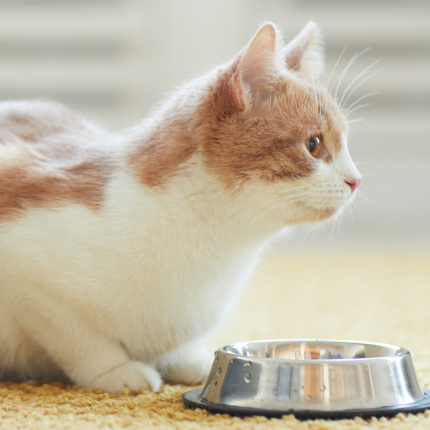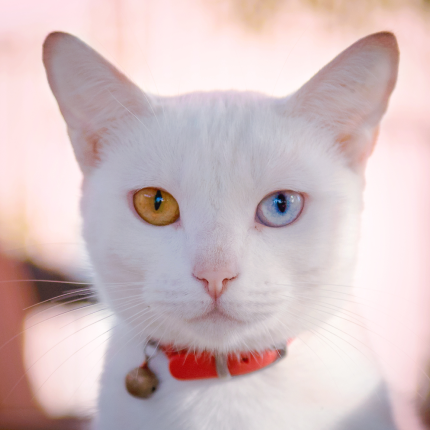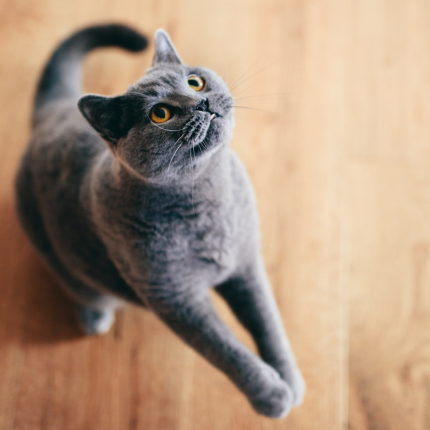Dry Food Versus Wet Food, What’s Better?

Should I use wet cat food?
When you walk into the supermarket or pet store, you are bombarded with different types of cat food: wet, dry, complete, and specific for a breed or age. There is so much choice. But is it better to give your cat wet or dry food? That is a frequently asked question, and there are advantages and disadvantages to wet and dry food.
advertisement
The Benefits of Wet Food
Cats are obligate carnivores (flesh eaters). Wet food is much closer to a cat’s natural diet than kibble.
Cats are native to desert areas and respond to a low-water diet by concentrating their urine and not drinking more water. A cat’s natural food (small prey animals) has a water percentage of 60%. The water content of wet food is also 60% or more. Feeding wet food is a convenient way to ensure that cats get more moisture.
Wet Food and Its’ Uses
Urinary Tract Health (Kidneys and Bladder): Eating a lot of wet food causes the cat to produce more water (less concentrated urine), reducing the risk of bladder problems. Any inflammatory cells are also excreted faster;
Energy regulation: Many cats cannot properly regulate their energy intake; when eating dry food, these cats quickly become too fat, with an increased risk of diabetes or cystitis. Feeding wet food can prevent this to a large extent.
Lose weight: Water has no calories, so wet food always has fewer calories than dry food. On average, dry food contains 3 – 4 k cal/g, while damp food contains an average of 0.8 – 1.5 k cal/g. Because wet food is also more filling, it can ideally help prevent obesity or lose weight;
Constipation (hard stools): Dehydration is often (partly) a cause of constipation in cats. By feeding wet food, the cat receives more water than if it were to eat dry food because it naturally drinks little;
Cats are adapted to living in dry surroundings, and in response to eating foods with low moisture content, they produce more concentrated pee rather than drinking more water. It has been argued that giving cats wet food rather than water to drink would be a more appropriate strategy to provide them with water because prey for cats often has a moisture content greater than 60 percent.
Dehydrated cats are at an increased risk for developing several ailments, including kidney disease. On the other hand, it is not apparent if consuming dry food results in inadequate hydration or poorer hydration than when consuming wet food. Several research studies have been carried out to examine the effect of feeding dry versus wet diets on the water status of cats, and the findings have been contradictory.
Wet foods are beneficial for the following:
Wet foods promote more dilute urine, which may result in a lower concentration of inflammatory components in the bladder. This may be beneficial for the prevention of urinary tract problems. The hypothesis is that since wet foods promote more dilute urine, this may result in a lower concentration of these components in the bladder.
Weight loss: Since water does not have calories, wet foods always have a lower energy density (in the form of calories) than dry foods. Wet food has between 0.8 and 1.5 k cal per gram, and dry food has anything from 3 to 4 k cal per gram on average. Some diets contain even more calories per gram (some weight loss diets contain even less). Because of this, moist food tends to be more filling, making it a valuable component in strategies for either weight loss or weight maintenance.
Constipation – Dehydration is a risk factor for constipation, and providing moist meals might be beneficial in these circumstances. Constipation can also be a symptom of irritable bowel syndrome (IBS). It is specific advice to suggest that people with cats with this problem feed them canned food.
The Benefits of Dry Food
Convenience: Dry food is easy to use, you put it in a bowl, and it stays good for a long time, while wet food dries up and is no longer tasty;
Unlimited feeding: Because you can quickly leave dry food, it is ideal for feeding your cat unlimited. Cats naturally eat small amounts regularly, and this way of feeding fits in perfectly with that;
Feeding puzzles: Dry food is beneficial in stationary and rolling feeding puzzles;
More energy: For thin cats or cats that eat little, feeding kibble is an excellent way to get all the necessary energy and nutrients.
The main advantages of dry food are its ease, convenience, and low cost. Millions of cats worldwide are fed dry food (either exclusively or in combination) and live long and healthy lives. Dry food allows for free feeding and can be stored for extended periods. When wet food is used, some cats prefer to graze their food throughout the day rather than at specific mealtimes. Dry food is more convenient to use with food dispenser toys for environmental enrichment and mental stimulation. Some dry diets can have positive dental effects by either reducing tartar formation or slowing plaque accumulation, which is achieved primarily through the mechanical scraping of the tooth. However, not all dry diets will have adequate kibble texture to address plaque, and even if they do, it is possible that they will not act on all tooth surfaces. There is a scarcity of conclusive evidence supporting the superiority of dry food over wet food in terms of oral health. In any case, tooth brushing is the gold standard for promoting adequate dental health.
Wet food has a lower energy density than dry food. This can be a problem in cats who are unable to self-regulate their energy intake, and the prevalence of obesity/overweight in cats is high enough to suggest that many cats are unable to do so. On the other hand, dry food will provide energy and nutrients in a concentrated, small volume, maximizing nutritional supply in thin and picky cats, which happens in some healthy cats but is also associated with the disease.
advertisement
Combine!
Both wet food and dry food, therefore, have advantages and disadvantages. Wet food is often more expensive and less easy to use. Still, it can be a great advantage for many cats in treating, for example, cystitis, kidney problems, constipation and obesity. Dry food is easy and works well in feeding puzzles. It is also helpful for thin cats because it contains more calories per gram of food.
What is best for your cat depends entirely on its health, weight, and home situation.
If a cat is not used to eating wet food, it is often difficult or impossible to persuade them to eat it if necessary for a specific reason.
Therefore, it’s best to feed your pet wet and dry food. This way, your cat is used to both. If it is necessary later in life for medical reasons to switch to one or the other, this switch is easy for your cat. Cats are creatures of habit!

Featured Articles

The Odd-Eyed Cat (AKA Heterochromia)
Cats are already beautiful and fascinating creatures, but people are bound to take notice when they have something as captivating as two different colored eyes. Odd-eyed cats always have one blue eye paired with either a green, yellow, or brown eye. This form of heterochromia occurs in other animals, including…

Greebles and Cats: The Origin and the Meaning
You may have seen an internet sensation concerning cats labeled “greebles.” Feel out of the loop? We’re here to help you. In 2019, Reddit user /user/literallyatree commented on a Reddit post about a cat that looks like it’s trying to slap a ghost. This user commented: “My family calls things…

Why Do Cats Roll Over Into Their Backs But Not Let You Touch Their Bellies?
It’s common knowledge dogs love to have their tummies rubbed when they freely lay down before you and roll onto their backs. But, if you’re also familiar with cats, you know that when they roll onto their backs with their bellies exposed, rubbing the belly will most likely result in…
